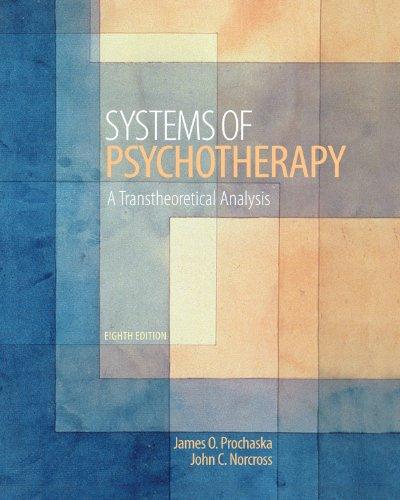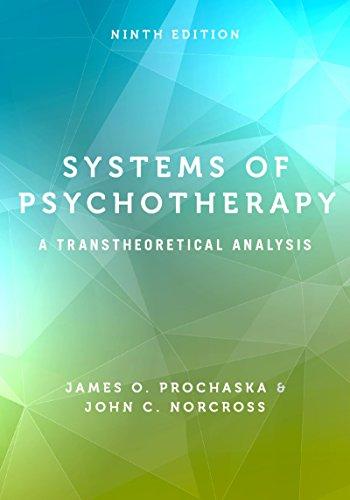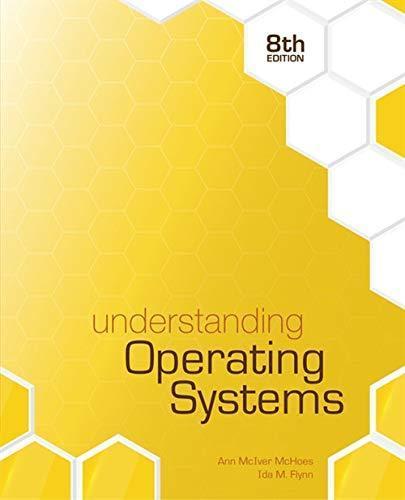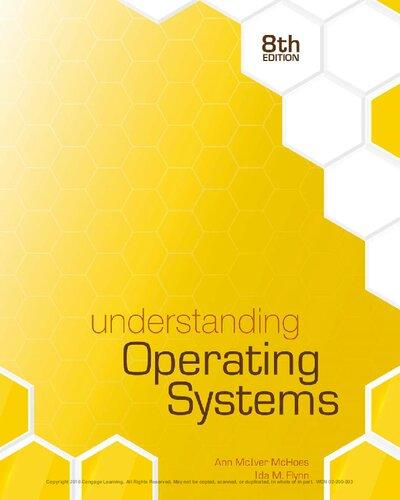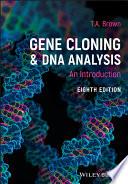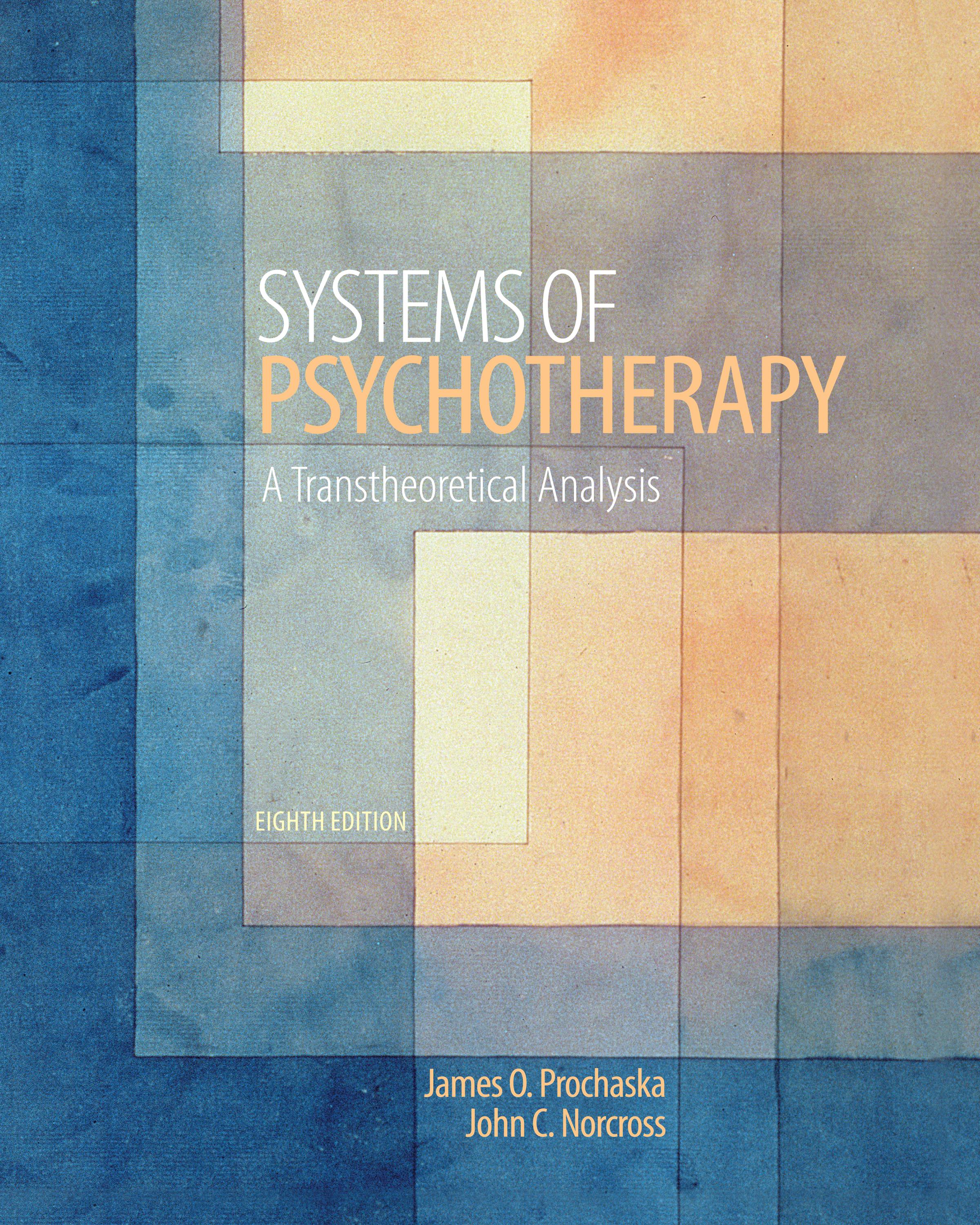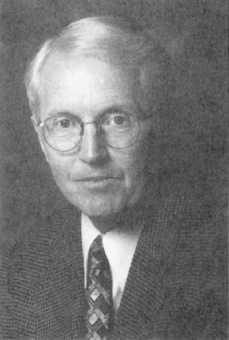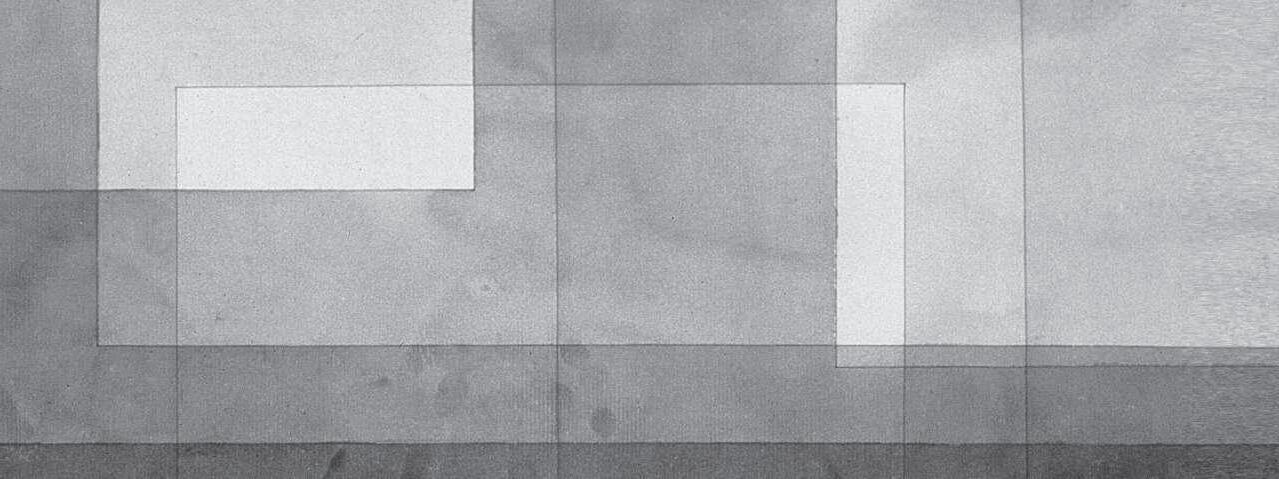Visit to download the full and correct content document: https://ebookmass.com/product/systems-of-psychotherapy-a-transtheoretical-analysis -8th-edition-ebook-pdf/
More products digital (pdf, epub, mobi) instant download maybe you interests ...
Systems of Psychotherapy: A Transtheoretical Analysis –Ebook PDF Version
https://ebookmass.com/product/systems-of-psychotherapy-atranstheoretical-analysis-ebook-pdf-version/
Systems of Psychotherapy: A Transtheoretical Analysis, 9th Ed 9th Edition James O. Prochaska
https://ebookmass.com/product/systems-of-psychotherapy-atranstheoretical-analysis-9th-ed-9th-edition-james-o-prochaska/
(eBook PDF) Systems Analysis and Design, 12th Edition
https://ebookmass.com/product/ebook-pdf-systems-analysis-anddesign-12th-edition/
(eBook PDF) International Financial Reporting & Analysis 8th Edition
https://ebookmass.com/product/ebook-pdf-international-financialreporting-analysis-8th-edition/
Understanding Operating Systems 8th Edition
https://ebookmass.com/product/understanding-operatingsystems-8th-edition/
(eTextbook PDF) for Econometric Analysis 8th Edition by William H. Greene
https://ebookmass.com/product/etextbook-pdf-for-econometricanalysis-8th-edition-by-william-h-greene/
Understanding Operating Systems, 8th ed. 8th Edition Ann Mchoes
https://ebookmass.com/product/understanding-operatingsystems-8th-ed-8th-edition-ann-mchoes/
Transient Analysis of Power Systems: A Practical Approach Editor: Juan A. Martinez-Velasco
https://ebookmass.com/product/transient-analysis-of-powersystems-a-practical-approach-editor-juan-a-martinez-velasco/
Gene Cloning and DNA Analysis 8th Edition T. A. Brown
https://ebookmass.com/product/gene-cloning-and-dna-analysis-8thedition-t-a-brown/
DetailedContents
AbouttheAuthors
CHAPTER1
DefiningandComparingthePsychotherapies 1
DefiningPsychotherapy2
TheValueofTheory4
TherapeuticCommonalities4
ProcessesofChange8
InitialIntegrationofProcessesofChange14
TherapeuticContent15
TheCaseofMrs.C17
KeyTerms19
RecommendedReadings19
RecommendedWebsites19
CHAPTER2
PsychoanalyticTherapies
ASketchofSigmundFreud21
TheoryofPersonality22
TheoryofPsychopathology27
TherapeuticProcesses29
TherapeuticContent32
TherapeuticRelationship36
PracticalitiesofPsychoanalysis37
MajorAlternatives:PsychoanalyticPsychotherapyand RelationalPsychoanalysis38
EffectivenessofPsychoanalysis41
CriticismsofPsychoanalysis43
APsychoanalyticAnalysisofMrs.C46
FutureDirections48
KeyTerms49
RecommendedReadings50
RecommendedWebsites50
CHAPTER3
PsychodynamicTherapies ..................... 51
ASketchofFreud’sDescendants52
ASketchofAlfredAdler53
TheoryofPersonality54
TheoryofPsychopathology56
TherapeuticProcesses57
TherapeuticContent60
TherapeuticRelationship63
PracticalitiesofAdlerianTherapy64
EgoPsychology65
ObjectRelations66
SupportiveTherapy70
BriefPsychodynamicTherapy70
EffectivenessofPsychodynamicTherapies72
CriticismsofPsychodynamicTherapies76
AnAdlerianAnalysisofMrs.C78
FutureDirections79
KeyTerms81
RecommendedReadings81
RecommendedWebsites82
CHAPTER4
ExistentialTherapies ......................... 83
ASketchofEarlyExistentialTherapists84
TheoryofPersonality86
TheoryofPsychopathology89
TherapeuticProcesses92
TherapeuticContent95
TherapeuticRelationship100
PracticalitiesofExistentialTherapy101
MajorAlternatives:Existential-Humanistic,Logotherapy, RealityTherapy102
EffectivenessofExistentialTherapy106
CriticismsofExistentialTherapy107
AnExistentialAnalysisofMrs.C109
FutureDirections111
KeyTerms112
RecommendedReadings112
RecommendedWebsites112
CHAPTER5
Person-CenteredTherapies 113
ASketchofCarlRogers114
TheoryofPersonality115
TheoryofPsychopathology117
TherapeuticRelationship119
TherapeuticProcesses120
TherapeuticContent124
PracticalitiesofPerson-CenteredTherapy127
AMajorAlternativeandExtension:Motivational Interviewing128
EffectivenessofPerson-CenteredTherapies132
CriticismsofPerson-CenteredTherapies135
APerson-CenteredAnalysisofMrs.C138
FutureDirections139
KeyTerms140
RecommendedReadings140
RecommendedWebsites141
CHAPTER6
ExperientialTherapies ........................ 142
ASketchofFritzPerls143
TheoryofPersonality144
TheoryofPsychopathology146
TherapeuticProcesses148
TherapeuticContent154
TherapeuticRelationship159
PracticalitiesofGestaltTherapy160
ExperientialTherapies161
Emotion-FocusedTherapy162
EffectivenessofExperientialTherapies164
CriticismsofExperientialTherapies166
AGestaltAnalysisofMrs.C168
FutureDirections170
KeyTerms171
RecommendedReadings171
RecommendedWebsites172
CHAPTER7
InterpersonalTherapies .......................
173
TheHeritageofInterpersonalTherapies174
ASketchofIPTFounders175
TheoryofPersonality175
TheoryofPsychopathology175
TherapeuticProcesses177
TherapeuticContent179
TherapeuticRelationship181
PracticalitiesofIPT181
AMajorAlternative:TransactionalAnalysis182
EffectivenessofInterpersonalTherapies187
CriticismsofInterpersonalTherapies189
AnInterpersonalAnalysisofMr.andMrs.C191
FutureDirections192
KeyTerms193
RecommendedReadings193
RecommendedWebsites193
CHAPTER8 ExposureTherapies
ANoteonExposureTherapies195 ImplosiveTherapy195
ProlongedExposure197 EMDR205
CriticismsofExposureTherapies211
ExposureTherapywithMrs.C213 FutureDirections215
KeyTerms215
RecommendedReadings215
RecommendedWebsites216
194
CHAPTER9 BehaviorTherapies ........................... 217
ASketchofBehaviorTherapy218
Counterconditioning220
ContingencyManagement228
Cognitive-BehaviorModification236
TherapeuticRelationship241
PracticalitiesofBehaviorTherapy242
EffectivenessofBehaviorTherapy244
CriticismsofBehaviorTherapy254
ABehavioralAnalysisofMrs.C256
FutureDirections258
KeyTerms258
RecommendedReadings259
RecommendedWebsites260
CHAPTER10
CognitiveTherapies .......................... 261
ASketchofAlbertEllis262
REBTTheoryofPersonality263
REBTTheoryofPsychopathology265
REBTTherapeuticProcesses267
REBTTherapeuticContent271
REBTTherapeuticRelationship275
ASketchofAaronBeck276
CognitiveTheoryofPsychopathology277
CognitiveTherapeuticProcesses278
CognitiveTherapeuticRelationship281
PracticalitiesofCognitiveTherapies282
EffectivenessofCognitiveTherapies283
CriticismsofCognitiveTherapies290
ACognitiveAnalysisofMrs.C293
FutureDirections294
KeyTerms296
RecommendedReadings296
RecommendedWebsites297
CHAPTER11
Third-WaveTherapies ........................ 298
ASketchofStevenHayes299
ACTTheoryofPsychopathology300
ACTTherapeuticProcesses300
ACTTherapeuticRelationship302
ASketchofMarshaLinehan302
DBTTheoryofPsychopathology303
DBTTherapeuticProcesses303
DBTTherapeuticRelationship305
MindfulnessTherapies305
PracticalitiesofThird-WaveTherapies307
EffectivenessofThird-WaveTherapies308
CriticismsofThird-WaveTherapies310
AThird-WaveAnalysisofMrs.C312
FutureDirections313
KeyTerms314
RecommendedReadings314
RecommendedWebsites315
TheContextofSystemicTherapies317
Communication/StrategicTherapy319
StructuralTherapy327
BowenFamilySystemsTherapy333
Evidence-BasedFamilyTherapies338
EffectivenessofSystemicTherapies340
CriticismsofSystemicTherapies345
ASystemicAnalysisoftheCFamily348
FutureDirections350
KeyTerms351
RecommendedReadings351
RecommendedWebsites352
CHAPTER13 Gender-SensitiveTherapies
ASketchofSociopoliticalForces353
TheoryofPersonality354
TheoryofPsychopathology355
TherapeuticProcesses359
TherapeuticContent362
TherapeuticRelationship365
PracticalitiesofGender-SensitiveTherapies366 Male-SensitivePsychotherapy367
EffectivenessofGender-SensitiveTherapies369
CriticismsofGender-SensitiveTherapies370
AFeministAnalysiswithMrs.C371
FutureDirections372
KeyTerms373
RecommendedReadings373
RecommendedWebsites374 CHAPTER14
ASketchofMulticulturalPioneers376
TheoryofPersonality379
TheoryofPsychopathology381
TherapeuticProcesses384
TherapeuticContent388
TherapeuticRelationship390
PracticalitiesofMulticulturalTherapies392
PsychotherapywithLGBTClients394
EffectivenessofMulticulturalTherapies397
CriticismsofMulticulturalTherapies398
AMulticulturalAnalysisofMrs.C400
FutureDirections402
KeyTerms403
RecommendedReadings403
RecommendedWebsites404
CHAPTER15
ConstructivistTherapies
ASketchoftheConstructionofTherapies406
Solution-FocusedTherapy407
NarrativeTherapy412
EffectivenessofConstructivistTherapies416
CriticismsofConstructivistTherapies418
ANarrativeAnalysisbyMrs.C421
FutureDirections422
KeyTerms423
RecommendedReadings423
RecommendedWebsites424
CHAPTER16
IntegrativeTherapies
ASketchofIntegrativeMotives426
CommonFactors428
TechnicalEclecticismorTheoreticalIntegration?431
IntegrativePsychodynamic-BehaviorTherapy433 MultimodalTherapy439
CriticismsofIntegrativeTherapies447
AMultimodalAnalysisofMrs.C449
FutureDirections450
KeyTerms451
RecommendedReadings452
RecommendedWebsites452
DevelopmentalPerspectives454
TheTranstheoreticalModel456
ProcessesofChange457
StagesofChange459
IntegrationofStagesandProcesses465
LevelsofChange467
PuttingItAllTogether469
TheTranstheoreticalRelationship472
EffectivenessofTranstheoreticalTherapy472 CriticismsofTranstheoreticalTherapy475
ATranstheoreticalAnalysisofMrs.C476
KeyTerms480
RecommendedReadings480
RecommendedWebsites481
ADelphiPoll482
TwelveEmergingDirections485
InClosing497
KeyTerms497
RecommendedReadings497
RecommendedWebsites498
Preface
Welcometotheeightheditionof Systemsof Psychotherapy:ATranstheoreticalAnalysis.Our abidinghopeisthatourbookwillinformand exciteyou.Informyouaboutvaluablepsychotherapytheoriesandexciteyoutoconductpowerful psychotherapyfortheenrichmentoffellow humans.
Ourbookprovidesasystematic,comprehensive,andbalancedsurveyoftheleadingsystemsof psychotherapy.Itisdesigned,however,tobemore thanjustasurvey,aswestrivetowardasynthesis bothwithineachpsychotherapysystemandacross thevarioussystems.Withinaparticularsystemof therapy,thisbookfollowstheintegrativesteps thatflowfromthesystem’stheoryofpersonality toitstheoryofpsychopathologyandculminatesin itstherapeuticprocessandtherapyrelationship. Acrossthevarioussystemsoftherapy,ourbook offersanintegrativeframeworkthathighlightsthe manysimilaritiesoftherapysystemswithoutblurringtheiressentialdifferences.Thecomparative analysisclearlydemonstrateshowmuchpsychotherapysystemsagreeontheprocessesproducing changewhiledisagreeingonthecontentthat needstobechanged.
SystemsofPsychotherapy:ATranstheoretical Analysis isintended,primarily,foradvanced undergraduateandgraduatestudentsenrolledin introductorycoursesinpsychotherapyand counseling.ThiscourseiscommonlytitledSystemsofPsychotherapy,TheoriesofCounseling, PsychologicalInterventions,orIntroductionto Counselingandisofferedtopsychology,
counseling,socialwork,psychiatry,nursing, humanrelations,andotherstudents.Ourvolume isintended,secondarily,forpsychotherapistsofall professionsandpersuasionsseekingacomparative overviewoftheburgeoningfieldofpsychotherapy. Wehavebeenimmenselygratifiedbythefeedback fromreaderswhohaveusedthistextinpreparing forcomprehensiveexams,licensuretests,and boardcertificationaswellasfromthosewho havefounditinstrumentalinacquiringamore integrativeperspective.
OurObjectives
Thecontentsandgoalsofthiseighthedition embodyourobjectivesaspsychotherapypractitioners,teachers,researchers,andtheorists.As practitioners,weappreciatethevitalityandmeaningofdifferentclinicalapproaches.Weattemptto communicatetheexcitementanddepthofthese psychotherapysystems.Accordingly,weavoid simpledescriptionsofthesystemsasdetached observersinfavorofimmersingourselvesin eachsystemasadvocates.
Aspractitioners,weareconvincedthatany treatiseonsuchavitalfieldaspsychotherapy mustcomealivetodothesubjectmatterjustice. Tothisend,wehaveincludedawealthofcaseillustrationsdrawnfromourcombined75yearsofclinicalpractice.(Whenoneofusisspeakingfromour ownexperience,wewillidentifyourselvesbyour initials JOPforJamesO.ProchaskaandJCNfor JohnC.Norcross.)Wedemonstratehowthe samecomplicatedpsychotherapycase Mrs.C is
formulatedandtreatedbyeachsystemofpsychotherapy.Thisandallofthecaseexamplescounterbalancethetheoreticalconsiderations;inthisway, theoriesbecomepragmaticandconsequential relevanttowhattranspiresinthetherapeutic hour.Thedetailsofindividualclientshavebeen altered,ofcourse,topreservetheirprivacyand anonymity.
Aspsychotherapyteachers,werecognizethe complexityanddiversityoftheleadingtheoriesof psychotherapy.Thisbookendeavorstopresentthe essentialconceptsclearlyandconciselybutwithout resortingtooversimplification.Ourstudentsoccasionallycomplainthattheoristsseemtohavea knackformakingthingsmorecomplicatedthan theyreallyare.Wehopethatasyoumovethrough thesepagesyouwillgainadeeperappreciationfor thecomplexityofthehumanconditionor,atleast, thecomplexityofthemindsofthoseattemptingto articulatethehumancondition.
Ourdecadesofteachingandsupervisingpsychotherapyhavealsotaughtusthatstudents desireanoverarchingstructuretoguidetheacquisition,analysis,andcomparisonofinformation. Unlikeeditedpsychotherapytextswithvarying writingstylesandchaptercontent,weusea consistentstructureandvoicethroughoutthe book.Insteadofillustratingoneapproachwith Ms.AppleandanotherapproachwithMr. Orange,wesystematicallypresentadetailedtreatmentofMrs.Cforeachandeveryapproach.
Aspsychotherapyresearchers,theevidence hastaughtusthatpsychotherapyhasenormous potentialforimpactingpatientsinapositive (andoccasionallyanegative)manner.Inthis view,therapyismoreanalogoustopenicillin thantoaspirin.Withpsychotherapyexpectedto producestrongratherthanweakeffects,we shouldbeabletodemonstratetheeffectiveness ofpsychotherapyeveninthefaceoferrorcaused bymeasurementandmethodologicalproblems. Wethusincludeasummaryofcontrolled
outcomestudiesandmeta-analyticreviewsthat haveevaluatedtheeffectivenessofeachtherapy system.
Researchandpracticehavefurthertaughtus thateachpsychotherapysystemhasitsrespective limitationsandcontraindications.Forthisreason, weoffercogentcriticismsofeachapproachfrom thevantagepointsofcognitive-behavioral,psychoanalytic,humanistic,cultural,andintegrative perspectives.Theneteffectisabalancedcoverage combiningsympatheticpresentationandcritical analysis.
Aspsychotherapytheorists,wedo not endorse theendlessproliferationofpsychotherapysystems,eachpurportedlyuniqueandsuperior despitetheabsenceofresearchevidence.What ouramorphousdiscipline does needisaconcerted efforttopulltogethertheessentialsoperatingin effectivetherapiesandtodiscardthosefeatures unrelatedtoeffectivepractice.Fromourcomparativeanalysisofthemajorsystemsoftherapy, wehopetomovetowardahigherintegration thatwillyieldatranstheoreticalapproachto psychotherapy.
Andfromcomparativeanalysisandresearch, wehopetocontributetoaninclusive,evidencebasedpsychotherapyinwhichtreatmentmethods andtherapyrelationships derivedfromthese majorsystemsoftherapy willbetailoredtothe needsoftheindividualclient.Inthisway,we believe,theeffectivenessandapplicabilityofpsychotherapywillbeenhanced.
ChangesintheEighthEdition
Innovationsappearandvanishwithbewildering rapidityonthepsychotherapeuticscene.One year ’streatmentfad say,neurolinguistic programming fadesintooblivioninjustafew years.Thevolatilenatureofthepsychotherapy disciplinerequiresregularupdatesinorderfor practitionersandstudentstostayabreastof developments.
Theevolutionofthisbookcloselyreflectsthe changinglandscapeofpsychotherapy.Thefirst editionin1979wasrelativelybriefandonlyhinted atthepossibilityofintegration.Thesecondedition addedsectionsonobjectrelations,cognitive,and systemstherapies.Thethirdeditionbroughtnew chaptersongender-sensitivetherapiesandintegrativetreatments,aswellasJohnC.Norcrossas acoauthor.Thefourtheditionfeaturedanew chapteronconstructivisttherapiesandtheadditionofmaterialonmotivationalinterviewing, EMDR,andpsychotherapyformen.Thefiftheditionbroughtmorematerialonexperientialtherapiesandoninterpersonalpsychotherapy(IPT). Thesixtheditionprovidedaseparatechapteron multiculturaltherapies(formerlycombinedwith gender-sensitivetherapies),andtheseventheditionfeaturednewsectionsondialecticalbehavior therapyandrelationalpsychoanalysis.
Thiseighthedition,inturn,bringsahostof changesthatreflecttrendsinthefield.Among theseare:
• anewchapteronthird-wavetherapies, includingacceptanceandmindfulness approaches(Chapter11)
• areorganizationofthechapteronexperiential therapies(Chapter6)tofocusequallyon Gestaltandemotion-focusedtherapy
• anewsectionontheemergingevidence-based familytherapies(Chapter12)
• moreattentiontoattachment-basedtherapies inboththepsychodynamicandexperiential chapters
• enlargedconsiderationofthetranstheoretical model(Chapter17)
• updatedreviewsofmeta-analysesandcontrolledoutcomestudiesconductedoneach psychotherapysystem
• continuedeffortstomakethebookstudent friendlythroughout(seethefollowingsection)
Withtheseadditions,thetextnowthoroughly analyzesthe16leadingsystemsofpsychotherapy
andbrieflysurveysanother31,thusaffordinga broaderscopethanisavailableinmosttextbooks. Guidingallthesemodificationshasbeenthe unwaveringgoalofourbook:toprovideacomprehensive,rigorous,andbalancedsurveyofthe majortheoriesofpsychotherapy.Expandingthe breadthof SystemsofPsychotherapy hasbeen accomplishedonlywithinthecontextofacomparativeanalysisthatseekstoexplicateboththe fundamentalsimilaritiesandtheusefuldifferences amongthetherapyschools.
StudentandInstructorFriendly
The30-plusyearssincethefirsteditionofthis bookhaverepeatedlytaughtustokeepoureye ontheball:studentlearning.Onthebasisoffeedbackfromreadersandourstudents,wehave introducedaidstoenhancestudentlearning. Theseinclude:
• alistofkeytermsattheendofeachchapterto serveasastudyandreviewguide
• aseriesofrecommendedreadingsandwebsitesattheendofeachchapter
• astudentcompanionwebsiteatcengagebrain. com,whichincludesmini-chaptersontransactionalanalysisandimplosivetherapy,as wellaselementstohelpwithreviewand masteryofthetextbookmaterial.
• asetofPowerPointslidesforeachchapter (coordinatedbyRoryA.Pfund,KrystleL. Evans,andJohnC.Norcross,allattheUniversityofScranton)
• anexpanded TestBankandInstructor’ s ResourceManual coauthoredbytwoexceptionalteachers,Drs.LindaCampbell(UniversityofGeorgia)andAnthonyGiuliano (HarvardMedicalSchool).Availableto qualifiedadopters,themanuallistsfilmed therapydemonstrationsofthepsychotherapy systemsfeaturedinthetext,morethan 400activity/discussionideas,andadditional caseillustrationsforuseinclassoron
examinations.Themanualalsopresents 2,000+originalexamitems.
• analternativetableofcontentsasanappendix forthosewhowishtofocusonthechange processescuttingacrosstheories,ratherthan thepsychotherapytheoriesthemselves
• aTheoriesinActionvideo,developedbyEd Neukrug(OldDominionUniversity),that presentsshortclipsillustratingthesystemsof psychotherapyinaction.Availabletoqualified adopters.
Acknowledgments
Ourendeavorsincompletingpreviouseditions andinpreparingthiseditionhavebeenaided immeasurablybycolleaguesandfamilymembers. Inparticular,specialappreciationisextended toourgoodfriendsandclosecollaborators, Dr.CarloDiClementeandDr.WayneVelicer, fortheircontinuingdevelopmentofthetranstheoreticalapproach.WethankAllisonSmith forhercontributionstothechapteronmulticulturaltherapies(Chapter14)inpreviouseditions. WeareindebtedtoRoryPfundandDonnaRupp fortheirtirelesseffortsinwordprocessingthe manuscriptandinsecuringoriginalsources.
Wearealsogratefultothefollowingreviewers oftheeighthedition:
SheliBernstein-Goff,WestLibertyUniversity
DavidCarter,UniversityofNebraska
Omaha
MelodyBacon,ArgosyUniversity
MarkAoyagi,UniversityofDenver
BarbaraBeaver,UniversityofWisconsin–Whitewater
Weareamusedandstrangelysatisfiedthat reviewersoccasionallyfindourbooktobeslanted towardaparticulartheoreticalorientation but thentheycannotagreeonwhichorientationthat is!Onereviewersurmisedthatwedislikedpsychoanalysis,whereasanotherthoughtwecarrieda psychoanalyticvisionthroughoutthebook.We takesuchconflictingobservationsasevidence thatwearestrikingatheoreticalbalance.
Threegroupsofindividualsdeservespecific mentionfortheirsupportovertheyears.First,we aregratefultotheNationalInstitutesofHealth,the UniversityofRhodeIsland,andtheUniversityof Scrantonfortheirfinancialsupportofourresearch. Second,weareindebtedtoourclients,whocontinuetobeourultimateteachersofpsychotherapy. Andthird,weareappreciativeofthegoodpeople atBrooks/ColeandCengageLearningforseeing thisneweditionof SystemsofPsychotherapy:A TranstheoreticalAnalysis tofruition.
Finally,weexpressourdeepestappreciationto ourspouses(Jan;Nancy)andtoourchildren (JasonandJodi;RebeccaandJonathon),who werewillingtosacrificeforthesakeofourscholarshipandwhowereavailableforsupportwhen weemergedfromsolitude.Theircaringhasfreed ustocontributetotheeducationofthosewho mightonedayusethepowersofpsychotherapy tomakethisabetterworld.
JamesO.Prochaska
JohnC.Norcross
Definingand Comparingthe Psychotherapies
AnIntegrativeFramework
Thefieldofpsychotherapyhasbeenfragmented byfutureshockandstaggeredbyover-choice. Wehavewitnessedthehyperinflationofbrandnametherapiesduringthepast50years.In 1959,Harperidentified36distinctsystemsof psychotherapy;by1976,Parloffdiscoveredmore than130therapiesinthetherapeuticmarketplace or,perhapsmoreappropriately,the “jungleplace.” Recentestimatesnowputthenumberatover500 andgrowing(Pearsall,2011).
Theproliferationoftherapieshasbeen accompaniedbyanavalancheofrivalclaims:Each systemadvertisesitselfasdifferentiallyeffectiveand uniquelyapplicable.Developersofnewsystems usuallyclaim80%to100%success,despitethe absenceofcontrolledoutcomeresearch.Ahealthy diversityhasdeterioratedintoanunhealthychaos. Students,practitioners,andpatientsareconfronted withconfusion,fragmentation,anddiscontent.With somanytherapysystemsclaimingsuccess,which theoriesshouldbestudied,taught,orbought?
Abookbyaproponentofaparticulartherapy systemcanbequitepersuasive.Wemayevenfind
ourselvesusingthenewideasandmethodsin practicewhilereadingthebook.Butwhenwe turntoanadvocateofaradicallydifferent approach,theconfusionreturns.Listeningto proponentscomparetherapiesdoeslittleforour confusion,excepttoconfirmtherulethatthose whocannotagreeonbasicassumptionsareoften reducedtocallingeachothernames.
Webelievethatfragmentationandconfusion inpsychotherapycanbestbereducedbya comparativeanalysisofpsychotherapysystems thathighlightsthemanysimilaritiesacross systemswithoutblurringtheiressentialdifference. Acomparativeanalysisrequiresafirm understandingofeachoftheindividualsystemsof therapytobecompared.Indiscussingeachsystem, wefirstpresentabriefclinicalexampleandintroduce thedeveloper(s)ofthesystem.Wetracethesystem’ s theoryofpersonalityasitleadstoitstheoryof psychopathologyandculminatesinitstherapeutic processes,therapeuticcontent,andtherapy relationship.Wethenfeaturethepracticalities ofthepsychotherapy.Followingasummaryof
controlledresearchontheeffectivenessofthat system,wereviewcentralcriticismsofthat psychotherapyfromdiverseperspectives.Each chapterconcludeswithananalysisofthesame patient(Mrs.C)andaconsiderationoffuture directions.
Inoutlineform,ourexaminationofeach psychotherapysystemfollowsthisformat:
• Aclinicalexample
• Asketchofthefounder
• Theoryofpersonality
• Theoryofpsychopathology
• Therapeuticprocesses
• Therapeuticcontent
• Therapeuticrelationship
• Practicalitiesofthetherapy
• Effectivenessofthetherapy
• Criticismsofthetherapy
• AnalysisofMrs.C
• Futuredirections
• Keyterms
• Recommendedreadings
• Recommendedwebsites
Incomparingsystems,wewilluseanintegrative modeltodemonstratetheirsimilaritiesand differences.Anintegrativemodelwasselectedin partbecauseofitsspiritofrapprochement,seeking whatisusefulandcordialineachtherapysystem ratherthanlookingforwhatismosteasilycriticized. Integrationalsorepresentsthemainstreamof contemporarypsychotherapy:Researchconsistently demonstratesthat integration isthemostpopular orientationofmentalhealthprofessionals(Norcross, 2005).
Lackinginmostintegrativeendeavorsisa comprehensivemodelforthinkingandworking acrosssystems.Laterinthischapter,wepresentan integrativemodelthatissophisticatedenoughtodo justicetothecomplexitiesofpsychotherapy,yet simpleenoughtoreduceconfusioninthefield. Ratherthanhavingtoworkwith500-plustheories,
ourintegrativemodelassumesthatalimitednumber ofprocessesofchangeunderliecontemporarysystems ofpsychotherapy.Themodelfurtherdemonstrates howthecontentoftherapycanbereducedtofour differentlevelsofpersonalfunctioning.
Psychotherapysystemsarecomparedonthe particularprocess,orcombinationofprocesses, usedtoproducechange.Thesystemsarealso comparedonhowtheyconceptualizethemost commonproblemsthatoccurateachlevelof personalfunctioning,suchaslowself-esteem,lack ofintimacy,andimpulsedyscontrol.Because cliniciansareconcernedprimarilywiththereal problemsofrealpeople,wedonotlimitour comparativeanalysismerelytoconceptsanddata. Ouranalysisalsoincludesacomparisonofhow eachmajorsystemconceptualizesandtreatsthe samecomplexclient(Mrs.C).
Wehavelimitedourcomparativeanalysisto15 majorsystemsoftherapy.Systemshavebeenomitted becausetheyseemtobedyinganaturaldeathandare bestleftundisturbed,becausetheyaresopoorly developedthattheyhavenoidentifiabletheoriesof personalityorpsychopathology,orbecausetheyare primarilyvariationsonthemesalreadyconsideredin thebook.Thefinalcriterionforexclusionis empirical:Notherapysystemwasexcludedifat least1%ofAmericanmentalhealthprofessionals endorseditastheirprimarytheoreticalorientation. Table1.1summarizestheself-identifiedtheoriesof clinicalpsychologists,counselingpsychologists, socialworkers,andcounselors.
DefiningPsychotherapy
Ausefulopeningmoveinapsychotherapytextbook wouldbetodefinepsychotherapy thesubjectmatteritself.However,nosingledefinitionofpsychotherapyhaswonuniversalacceptance.Depending onone ’stheoreticalorientation,psychotherapycan beconceptualizedasinterpersonalpersuasion, healthcare,psychosocialeducation,professionally
Table1.1 TheoreticalOrientationsofPsychotherapistsintheUnitedStates
SOURCES:Bechtoldtetal.,2001;Bike,Norcross,&Schatz,2009;Goodyearetal.,2008;Norcross&Karpiak,2012.
coachedself-change,behavioraltechnology,aform ofreparenting,thepurchaseoffriendship,oracontemporaryvariantofshamanism,amongothers.It maybeeasiertopracticepsychotherapythanto explainordefineit(London,1986).
Ourworkingdefinitionof psychotherapy isas follows(Norcross,1990):
Psychotherapyistheinformedandintentional applicationofclinicalmethodsandinterpersonalstancesderivedfromestablishedpsychologicalprinciplesforthepurposeofassistingpeople tomodifytheirbehaviors,cognitions,emotions, and/orotherpersonalcharacteristicsindirectionsthattheparticipantsdeemdesirable.
Thisadmittedlybroaddefinitionisnonethelessareasonablybalancedoneandarelatively neutraloneintermsoftheoryandmethod.We have,forexample,notspecifiedthenumberor compositionoftheparticipants,asdifferent theoriesandclientscallfordifferentformats. Similarly,thetrainingandqualificationsofthe
psychotherapisthavenotbeendelineated.We recognizemultipleprocessesofchangeandthe multidimensionalnatureofchange;noattempt ismadeheretodelimitthemethodsorcontent oftherapeuticchange.Therequirementthatthe methodsbe “derivedfromestablishedpsychologicalprinciples ” issufficientlybroadtopermit clinicaland/orresearchvalidation.
Ourdefinitionalsoexplicitlymentionsboth “clinicalmethodsandinterpersonalstances.” In sometherapysystems,theactivechangemechanism hasbeenconstruedasatreatmentmethod;inother systems,thetherapyrelationshiphasbeenregarded astheprimarysourceofchange.Here,theinterpersonalstancesandexperiencesofthetherapistare placedonanequalfootingwithmethods.
Finally,wefirmlybelievethatanyactivity definedaspsychotherapyshouldbeconducted onlyforthe “purposeofassistingpeople” toward mutuallyagreed-upongoals.Otherwise though itmaybelabeledpsychotherapy itbecomesa subtleformofcoercionorpunishment.
TheValueofTheory
Theterm theory possessesmultiplemeanings.In popularusage,theoryiscontrastedwithpractice, empiricism,orcertainty.Inscientificcircles,theory isgenerallydefinedasasetofstatementsusedto explainthedatainagivenarea(Marx&Goodson, 1976).Inpsychotherapy,atheory(orsystem)isa consistentperspectiveonhumanbehavior,psychopathology,andthemechanismsoftherapeutic change.Theseappeartobethenecessary,butperhaps notsufficient,featuresofapsychotherapytheory. Explanationsofpersonalityandhumandevelopment arefrequentlyincluded,but,asweshallseeinthe behavioral,constructivist,andintegrativetherapies, arenotcharacteristicofalltheories.
Whencolleagueslearnthatwearerevisingour textbookonpsychotherapytheories,theyoccasionallyquestiontheusefulnessoftheories.Whynot, theyask,simplyproduceatextontheactualpracticeoraccumulatedfactsofpsychotherapy?Our responsetakesmanyforms,dependingonour moodatthetime,butgoessomethinglikethis. Onefruitfulwaytolearnaboutpsychotherapyis tolearnwhatthebestmindshavehadtosay aboutitandtocomparewhattheysay.Further, “absolutetruth” willprobablyneverbeattainedin psychotherapy,despiteimpressiveadvancesinour knowledgeanddespitealargebodyofresearch. Instead,theorywillalwaysbewithustoprovide tentativeapproximationsof “thetruth.”
Withoutaguidingtheoryorsystemofpsychotherapy,clinicianswouldbevulnerable,directionlesscreaturesbombardedwithliterallyhundredsof impressionsandpiecesofinformationinasingle session.Isitmoreimportanttoaskaboutearly memories,parentrelationships,life’smeaning, disturbingemotions,environmentalreinforcers, recentcognitions,sexualconflicts,orsomething elseinthefirstinterview?Atanygiventime,should weempathize,direct,teach,model,support,question,restructure,interpret,orremainsilentina therapysession?Apsychotherapytheorydescribes
theclinicalphenomena,delimitstheamountofrelevantinformation,organizesthatinformation,and integratesitallintoacoherentbodyofknowledge thatprioritizesourconceptualizationanddirects ourtreatment.
Themodelofhumanityembeddedwithina psychotherapytheoryisnotmerelyaphilosophicalissueforpurists.Itaffectswhichhumancapacitieswillbestudiedandcultivated,andwhichwill beignoredandunderdeveloped.Treatmentsinevitablyfollowfromtheclinician’sunderlying conceptionofpathology,health,reality,andthe therapeuticprocess(Kazdin,1984).Systemsof therapyembodydifferentvisionsoflife,which implydifferentpossibilitiesofhumanexistence (Messer&Winokur,1980).
Inthisregard,wewanttodisputethemisconceptionthatpsychotherapistsaligningthemselves withaparticulartheoryareunwillingtoadapt theirpracticestothedemandsofthesituation andthepatient.Avoluntarydecisiontolabeloneselfanadherentofaspecifictheorydoesnotconstitutealifetimecommitmentofstrictadherenceor dogmaticreverence(Norcross,1985).Goodcliniciansareflexible,andgoodtheoriesarewidely applicable.Thus,weseetheoriesbeingadapted foruseinavarietyofcontextsandcliniciansborrowingheavilyfromdivergenttheories.Apreferenceforoneorientationdoesnotprecludetheuse ofconceptsormethodsfromanother.Putanother way,theprimaryproblemisnotwithnarrow-gauge therapists,butwiththerapistswhoimposethat narrownessontotheirpatients(Stricker,1988).
TherapeuticCommonalities
Despitetheoreticaldifferences,thereisacentraland recognizablecoreofpsychotherapy.Thiscoredistinguishesitfromotheractivities suchasbanking, farming,orphysicaltherapy andgluestogether variationsofpsychotherapy.Thiscoreiscomposed of nonspecific or commonfactors sharedbyall formsofpsychotherapyandnotspecifictoany
one.Moreoftenthannot,thesetherapeutic commonalitiesarenothighlightedbytheoriesasof centralimportance,buttheresearchsuggestsexactly theopposite(Weinberger,1995).
Mentalhealthprofessionalshavelongobserved thatdisparateformsofpsychotherapysharecommonelementsorcorefeatures.Asearlyas1936, Rosenzweig,notingthatallformsofpsychotherapy havecurestotheircredit,invokedthefamousDodo birdverdictfrom AliceinWonderland, “Everybody haswonandallmusthaveprizes,” tocharacterize psychotherapyoutcomes.Hethenproposed,asa possibleexplanationforroughlyequivalentoutcomes,anumberoftherapeuticcommonfactors, includingpsychologicalinterpretation,catharsis, andthetherapist’spersonality.In1940,ameeting ofprominentpsychotherapistswasheldtoascertainareasofagreementamongpsychotherapy systems.Theparticipantsconcurredthatsupport, interpretation,insight,behaviorchange,agood relationship,andcertaintherapistcharacteristics werecommonfeaturesofsuccessfulpsychotherapy (Watson,1940).
Ifindeedthemultitudeofpsychotherapysystemscanalllegitimatelyclaimsomesuccess,then perhapstheyarenotasdiverseastheyappearon thesurface.Theyprobablysharecertaincorefeaturesthatmaybethe “curative” elements those responsiblefortherapeuticsuccess.Totheextent thatcliniciansofdifferenttheoriesarriveatacommonsetofstrategies,itislikelythatwhatemerges willconsistofrobustphenomena,astheyhave managedtosurvivethedistortionsimposedby thedifferenttheoreticalbiases(Goldfried,1980).
But,asonemightexpect,thecommonfactors positedtodatehavebeennumerousandvaried.Differentauthorsfocusondifferentdomainsorlevelsof psychosocialtreatment;asaresult,diverseconceptualizationsofthesecommonalitieshaveemerged.
Ourconsiderationofcommonfactorswillbe guidedbytheresultsofastudy(Grencavage& Norcross,1990)thatreviewed50publicationsto
determineconvergenceamongproposedtherapeuticcommonalities.Atotalof89commonalities wereproposed.Theanalysisrevealedthemost consensualcommonalitieswereclients’ positive expectationsandafacilitativerelationship.In whatfollows,wereviewthetherapeuticcommonalitiesofpositiveexpectations,thetherapeutic relationship,theHawthorneeffect,andrelated factors.
PositiveExpectations
Expectation isoneofthemostwidelydebatedand heavilyinvestigatedofthecommon(ornonspecific)variables.Thiscommonalityhasbeen describedasthe “edificecomplex”—thepatient’ s faithintheinstitutionitself,thedoorattheendof thepilgrimage,theconfidenceinthetherapistand thetreatment(Torrey,1972).
Acomputersearchyieldsmorethan500studiesthathavebeenconductedonpatients’ expectationsofpsychotherapy.Thehypothesisofmost ofthesestudiesisthatthetreatmentisenhanced bytheextenttowhichclientsexpectthetreatmenttobeeffective.Somecriticsholdthatpsychotherapyisnothingbutaprocessofinfluence inwhichweinduceanexpectationinourclients thatourtreatmentwillcurethem,andthatany resultingimprovementisafunctionofthe client’ sexpectingtoimprove.Surelymanytherapistswishondifficultdaysthattheprocesswere sosimple!
Theresearchevidencedemonstratesthatclientexpectationsdefinitelycontributetotherapy success,butisdividedonhowmuch(Clarkin& Levy,2004;Constantinoetal.,2011).Ofthestudiesreportingexpectationeffects,mostdemonstratethatahigh,positiveexpectationaddsto theeffectivenessoftreatments.Uptoonethird ofsuccessfulpsychotherapyoutcomesmaybe attributabletoboththehealerandthepatient believingstronglyintheeffectivenessofthetreatment(Robertsetal.,1993).
Butpsychotherapycanbynomeansbereduced toexpectationeffectsalone.Asophisticatedanalysis ofmultipleoutcomestudiesfoundthatpsychotherapywasmoreeffectivethancommonfactorsconditions,whichinturnweremoreeffectivethanno treatmentatall(Barberetal.,1988).Therankingfor therapeuticsuccessispsychotherapy,placebo,and control(donothingorwait),respectively.Infact,psychotherapyisnearlytwiceaseffectiveas “nonspecific” or placebo treatments,whichseektoinducepositive expectationsinclients(Grissom,1996).
Onthebasisoftheresearch,then,wewill assumethatexpectationisanactiveingredientin allsystemsoftherapy.Ratherthanbeingthecentral processofchange,however,apositiveexpectation isconceptualizedasacriticalpreconditionfortherapytocontinue.Mostpatientswouldnotparticipateinaprocessthatcoststhemdearlyintime, money,andenergyiftheydidnotexpecttheprocesstohelpthem.Forclientstocooperateinbeing desensitized,hypnotized,oranalyzed,itseemsreasonablethatmostofthemwouldneedtoexpect somereturnontheirinvestment.Itisalsoour workingassumptionthattherapistsconsciously strivetocultivatehopeandenhancepositiveexpectancies.Psychotherapyresearchneednotdemonstratethattreatmentoperatesfreefromsuch nonspecificorcommonfactors.Rather,thetaskis todemonstratethatspecifictreatmentsconsidered tocarrytheburdenofclientchangegobeyondthe resultsthatcanbeobtainedbycredibilityalone.
TherapeuticRelationship
Psychotherapyisatrootaninterpersonalrelationship.Thesinglegreatestareaofconvergence amongpsychotherapists,intheirnominationsof commonfactors(Grencavage&Norcross,1990) andintheirtreatmentrecommendations(Norcross etal.,1990),isthedevelopmentofastrongtherapeuticalliance.
Thismostrobustofcommonfactorshasconsistentlyemergedasoneofthemajordeterminantsofpsychotherapysuccess.Acrossvarious typesofpsychotherapy,atleast12%ofpsychotherapyoutcome whypatientsimprovein psychotherapy isduetothetherapeuticrelationship(Norcross,2011).Tosummarizetheconclusionsofanexhaustivereviewofthepsychotherapy outcomeliterature(Bergin&Lambert,1978):The largestvariationintherapyoutcomeisaccounted forbypre-existingclientfactors,suchasexpectationsforchangeandseverityofthedisorder.The therapeuticrelationshipaccountedforthesecond largestproportionofchange,withtheparticular treatmentmethodcominginthird.
Still,therelativeimportanceofthetherapeutic relationshipremainscontroversial.Atoneendof thecontinuum,somepsychotherapysystems,such astheradicalbehaviortherapies,viewtherelationshipbetweenclient1 andtherapistasexerting littleimportance;theclientchangeintherapy couldjustasreadilyoccurwithonlyaninteractive computerprogram,withoutthetherapist’ spresence.Forthesetherapysystems,ahumanclinician isincludedforpracticalreasonsonly,becauseour technologyinprogrammingtherapeuticprocesses isnotdevelopedfullyenoughtoallowthetherapisttobeabsent.
Towardthemiddleofthecontinuum,some therapyschools,suchascognitivetherapies,view therelationshipbetweenclinicianandclientas oneofthepreconditionsnecessaryfortherapyto proceed.Fromthispointofview,theclientmust trustandcollaboratewiththetherapistbeforebeing abletoparticipateintheprocessofchange.
Attheotherendofthecontinuum,Rogers’ s person-centeredtherapyseestherelationshipas the essentialprocessthatproduceschange.BecauseCarl Rogers(1957)hasbeenmostarticulateindescribing whathebelievesarethenecessaryconditionsfora
1Wewillemploytheterms client and patient interchangeablythroughoutthistextbookbecauseneithersatisfactorilydescribesthetherapy relationshipandbecausewewishtoremaintheoreticallyneutralonthisquarrelsomepoint.
therapeuticrelationship,letusbrieflyoutlinehiscriteriasothatwecanusetheseforcomparingsystems onthenatureofthetherapeuticrelationship.
1. Thetherapistmustrelateinagenuinemanner.
2. Thetherapistmustrelatewithunconditional positiveregard.
3. Thetherapistmustrelatewithaccurate empathy.
These andonlythese conditionsarenecessary andsufficientforpositiveoutcome,accordingto Rogers.
Thentherearethosepsychotherapysystems, suchaspsychoanalysis,thatseetherelationship betweentherapistandpatientprimarilyasthesource ofcontenttobeexaminedintherapy.Inthisview, therelationshipisimportantbecauseitbringsthe contentoftherapy(thepatient’sinterpersonal behavior)rightintotheconsultingroom.Thecontentthatneedstobechangedisthusabletooccur duringtherapy,ratherthanthepersonfocusingon issuesthatoccuroutsideoftheconsultingroom.
Inlightofthesevariousemphasesontherole ofthetherapeuticrelationship,itwillbenecessary todetermineforeachtherapysystemwhetherthe relationshipisconceivedas(1)apreconditionfor change,(2)aprocessofchange,and/or(3)acontenttobechanged.Moreover,ineachchapterthat follows,wewillconsidertherelativecontribution ofthetherapeuticrelationshiptotreatmentsuccess,aswellasthetherapistbehaviorsdesigned tofacilitatethatrelationship.
HawthorneEffect
Psychologistshaveknownforyearsthatmanypeoplecanimproveinsuchbehaviorsasworkoutput solelyasaresultofhavingspecialattentionpaid tothem.IntheclassicHawthornestudies(Roethlisberger&Dickson,1939)ontheeffectsofimproved lightingonproductivityinafactory,itwasdiscoveredthatparticipantsincreasedtheiroutputbysimplybeingobservedinastudyandreceivingextra
attention.Usuallysuchimprovementisassumedto beduetoincreasesinmorale,novelty,andesteem thatpeopleexperiencefromhavingothersattendto them aphenomenonthathascometobeknownas the Hawthorneeffect.
Onecommonalityamongallpsychosocial treatmentsisthatthetherapistpaysspecialattentiontotheclient.Consequently,attentionhas beenassumedtobeoneofthecommonfactors thatimpacttheresultsoftherapy.Anyonewho hasbeeninpsychotherapycanappreciatethegratificationthatcomesfromhavingacompetentprofessional’sundividedattentionforanhour.This specialattentionmayindeedaffectthecourseof therapy includingthoseoccasionalcasesin whichpatientsdonotimprovebecausetheydo notwanttosurrendersuchspecialattention.
Researchershavefrequentlyfoundthatattention doesindeedleadtoimprovement,regardlessof whethertheattentionisfollowedbyanyothertherapeuticprocesses.Inaclassicstudy(Paul,1967),50% ofpublic-speakingphobicsdemonstratedmarked improvementintheirsymptomsbyvirtueof receivinganattentionplacebointendedtocontrol fornonspecificvariablessuchasattention.(Inpsychotherapystudies,anattentionplacebocontrol groupreceivesa “treatment” thatmimicstheamount oftimeandattentionreceivedbythetreatmentgroup butthatdoesnothaveaspecificorintendedeffect.) Yearsofresearchdemonstratethatattentioncanbea powerfulcommonfactorintherapy.
Toconcludethatanyparticularpsychotherapyismoreeffectivethananattentionplacebo, itisnecessarythatresearchincludecontrolsfor attentioneffectsorsimplythepassageoftime.It isnotenoughtodemonstrateaparticulartherapy isbetterthannotreatment,becausetheimprovementfromthatparticulartherapymaybedue entirelytotheattentiongiventothepatients.
Severalresearchdesignsareavailabletomeasureorcontrolfortheeffectsofattentioninpsychotherapy.Themostpopulardesignistouse
placebogroups,asinPaul’sstudy,inwhichcontrol participantsweregivenasmuchattentionasclients intherapybutdidnotparticipateinprocesses designedtoproducechange.Analternativedesign istocomparetheeffectivenessofonetreatmentwith thatofanother,suchaspsychoanalytictherapywith cognitivetherapy.Ifonetherapeuticapproachdoes betterthantheother,wecanconcludethatthe differentialimprovementisduetomorethanjust attention,becausethelesseffectivetreatment included andthereforecontrolledfor theeffects ofattention.However,wedonotknowwhetherthe lesseffectivetherapyisanythingotherthanaplaceboeffect,evenifitleadstogreaterimprovement thannotreatment.Finally,insuchcomparative studies,ifboththerapiesleadtosignificantimprovement,butneithertherapydoesbetterthantheother, wecannotconcludethatthetherapiesareanything morethanHawthorneeffects,unlessanattention placebocontrolhasalsobeenincludedinthe study.Tobeconsideredacontrolledevaluationof apsychotherapy’sefficacy,studiesmustinclude controlsfortheHawthorneeffectandrelated factors.
OtherCommonalities
Inhisclassic PersuasionandHealing,Jerome Frank(1961;Frank&Frank,1991)positedthat allpsychotherapeuticmethodsareelaborations andvariationsofage-oldproceduresofpsychologicalhealing.Thefeaturesthatdistinguishpsychotherapiesfromeachother,however,receive specialemphasisinthepluralistic,competitive Americansociety.Becausetheprestigeandfinancialsecurityofpsychotherapistshingeontheir beingabletoshowthattheirparticularsystemis moresuccessfulthanthatoftheirrivals,littleglory hastraditionallybeenaccordedtotheidentificationofsharedorcommoncomponents.
Frankarguesthattherapeuticchangeispredominantlyafunctionofcommonfactors:anemotionallycharged,confidingrelationship;ahealing setting;arationaleorconceptualscheme;anda
therapeuticritual.Otherconsensualcommonalities includeaninspiringandsociallysanctionedtherapist;opportunityforcatharsis;acquisitionand practiceofnewbehaviors;explorationofthe “innerworld” ofthepatient;suggestion;andinterpersonallearning(Grencavage&Norcross,1990). Manyobserversnowconcludethatfeaturesshared byalltherapiesaccountforanappreciableamount ofobservedimprovementinclients.
Sopowerfularethesetherapeuticcommonalities forsomecliniciansthatexplicitlycommonfactors therapieshavebeenproposed.SolGarfield(1980, 1992),totakeoneprominentexample,findsthe mechanismsofchangeinvirtuallyallapproachesto berootedinthetherapeuticrelationship,emotional release,explanationandinterpretation,reinforcement,desensitization,confrontingaproblem,and skilltraining.Weshallreturntocommonfactors approachesinChapter16(IntegrativeTherapies).
SpecificFactors
Atthesametime,commonfactorstheoristsrecognizethevalueofunique orspecific factorsin disparatepsychotherapies.Apsychotherapistcannotpracticenonspecifically;specifictechniques andrelationshipsfillthetreatmenthour.Indeed, researchhasdemonstratedthedifferentialeffectivenessofafewtherapieswithspecificdisorders, suchasexposuretherapyforobsessive-compulsive disorder,parentmanagementtrainingforconduct problems,andsystemictherapyforcouplesconflict.Asadiscipline,psychotherapywilladvance byintegratingthepowerofcommonfactorswith thepragmaticsof specificfactors.Wenowturnto theprocessesofchange therelativelyspecificor uniquecontributionsofatherapysystem.
ProcessesofChange
Thereexists,aswesaidearlierinthischapter,an expandingmorassofpsychotherapytheoriesand anendlessproliferationofspecifictechniques. Considertherelativelysimplecaseofsmoking
cessation:Inoneofourearlystudies,weidentified morethan50formaltreatmentsemployedbyhealth professionalsand130differenttechniquesusedby successfulself-changerstostopsmoking.Isthereno smallerandmoreintelligibleframeworkbywhichto examineandcomparethepsychotherapies?
The transtheoretical acrosstheories model reducesthetherapeuticmorasstoamanageable numberofprocessesofchange.Thereareliterally hundredsofglobaltheoriesofpsychotherapy,and wewillprobablyneverreachcommongroundin thetheoreticalorphilosophicalrealm.Thereare thousandsofspecifictechniquesinpsychotherapy, andwewillrarelyagreeonthespecific,momentto-momentmethodstouse.Bycontrast,the processesofchange representamiddlelevelof abstractionbetweenglobaltheories(suchaspsychoanalysis,cognitive,andhumanistic)andspecific techniques(suchasdreamanalysis,progressive musclerelaxation,andfamilysculpting).Table1.2 illustratesthisintermediatelevelofabstraction representedbytheprocessesofchange.
Itisatthisintermediatelevelofanalysis processesorprinciplesofchange thatmeaningful pointsofconvergenceandcontentionmaybe foundamongpsychotherapysystems.Itisalsoat thisintermediatelevelthatexpertpsychotherapists typicallyformulatetheirtreatmentplans notin termsofglobaltheoriesorspecifictechniquesbut aschangeprocessesfortheirclients.
Processesofchangearethecovertandovert activitiesthatpeopleusetoalteremotions,
thoughts,behaviors,orrelationshipsrelatedtoa particularproblemormoregeneralpatternsof living.Infewerwords,processesarehowpeople change,withinpsychotherapyandbetween therapysessions.Theseprocesseswerederived theoreticallyfromacomparativeanalysisofthe leadingsystemsofpsychotherapy(Prochaska, 1979).Inthefollowingsections,weintroduce theseprocessesofchange.
ConsciousnessRaising
Traditionally,increasinganindividual’sconsciousnesshasbeenoneoftheprimeprocessesofchange inpsychotherapy. Consciousnessraising soundsso contemporary,yettherapistsfromavarietyofpersuasionshavebeenworkingfordecadestoincrease theconsciousnessofclients.BeginningwithFreud’ s objective “tomaketheunconsciousconscious,” all so-calledinsightpsychotherapiesbeginbyworking toraisetheindividual’slevelofawareness.Itis fittingthatthe insight or awarenesstherapies workwithconsciousness,whichisfrequently viewedasahumancharacteristicthatemerged withtheevolutionoflanguage.
Withlanguageandconsciousness,humansdo notneedtorespondreflexivelytoeverystimulus. Forexample,themechanicalenergyfromahand hittingagainstourbackdoesnotcauseustoreact withmovement.Instead,werespondthoughtfully totheinformationcontainedinthattouch,suchas whetherthehandtouchingusisafriendpattingus ontheback,arobbergrabbingus,orapartnerhitting us.Inordertorespondeffectively,wemustprocess informationtoguideusinmakingaresponseappropriatetothesituation.Consciousness-raisingtherapiesattempttoincreasetheinformationavailableto individualssotheycanmakethemosteffective responsestolife.
Foreachofthechangeprocesses,thepsychotherapist’sfocuscanbeonproducingchange eitherattheleveloftheindividual’sexperienceor attheleveloftheindividual’senvironment.When
Table1.2 LevelsofAbstraction
theinformationgivenaclientconcernstheindividual’sownactionsandexperiences,wecallthat feedback.Anexampleofthefeedbackprocess occurredinthecaseofasternandproper middle-agedwomanwhowasunawareofjust howangrysheappearedtoothers.Shecouldnot connectherchildren’savoidanceofherorher recentrashofautomobileaccidentswithrage, becauseshekeptinsistingthatshewasnot angry.Afterviewingvideotapesofherselfinteractingwithmembersofapsychotherapygroup,however,shewasstunned.Allshecouldsaywas, “My God,howangryIseemtobe!”2
Whentheinformationgivenaclientconcerns environmentalevents,wecallthis education.An exampleoftherapeuticmovementduetoeducationoccurredinthecaseofanagingmanwhowas distressedoverthefactthathistimetoattainerectionsandreachorgasmshadincreasednoticeably overthepastfewyears.Hewasveryrelievedwhen helearnedthatsuchadelaywasquitenormalin oldermen.
Defenseswardoffthreateninginformation aboutourselvesinresponsetoeducationandfeedback.Thesedefensemechanismsarelikeblinders orthe “rose-coloredglasses” thatsomepeopleuse toselectivelyattendonlytopositiveinformation aboutthemselvesandtoignorenegativeinput. Cognitiveblinderspreventindividualsfrom increasingtheirconsciousnesswithoutfeedback oreducationfromanoutsideparty.
Forexample,my(JOP’s)wife,whoisalsoapsychotherapist,confrontedmewiththefollowing informationthatmademeawareofblindersIwas wearing:Weweretryingtoanticipatewhowouldbe oneachother’slistofsexuallyattractiveindividuals. Iwasabsolutelysurethatmyfirstthreeguesses wouldbehighonmywife’slist.WhenIsaida
friend’sname,mywifelaughedandsaidthatshe knewIalwaysthoughtthat,butshewasn’tattracted tohim.Shealsosaidthatshewasnowsurethathis wifewasonmylist.Mynexttwoguesseswerealso wrong,butmywifewasquicklyabletoguessthatI foundtheirwivesattractive.Iwasamazedtorealize howmuchIhadbeenprojectingovertheyearsand howmyprojectionkeptmefrombeingawareofthe qualitiesinmenthatmywifefoundappealing.
Howcanourawarenessofsuchinformation leadtobehaviorchange?Thinkofourconsciousnessasabeamoflight.Theinformationunavailable tousislikeadarknessinwhichwecanbelost,held back,ordirectedwithoutknowingthesourceofthe influence.Inthedarkness,weareblind;wedonot possesssufficientsightorlighttoguideuseffectively inourlives.Forexample,withoutbeingawareof howagingnormallyaffectssexualresponse,an agingman(orwoman)wouldnotknowwhether thebestdirectionwouldbetoadmithe(orshe) wasoverthehillandgiveuponsex,toeattwo rawoystersadayasanaphrodisiac,totakeViagra, ortoenjoyhisorherpresentbehaviorwithoutlivinguptosomemediastereotypeofsexuality.
Aswewillsee,manypsychotherapysystems agreethatpeoplecanchangeasaresultofraised consciousness increasingexperientialorenvironmentalinformationpreviouslyunavailabletothem. Thedisagreementamongtheseconsciousnessraisingpsychotherapiesliesinwhichconcrete techniquesaremosteffectiveindoingso.
Catharsis
Catharsis hasoneofthelongesttraditionsasa processofchangeandreferstothetherapeutic releaseofpent-upfeelingsandemotions.The ancientGreeksbelievedthatexpressingemotions wasasuperbmechanismofprovidingpersonal
2Inthecaseofthiswoman,aswithsomanyclients,wecannotdemonstratethatthewayweconceptualizetheperson’sproblemsis,infact, thewaythingsreallyare.Wecannot,forexample,demonstrateinanempiricalmannerthatthiswoman’sproblemswereduetoangryfeelingsthatwereoutsideofherawareness.Nevertheless,itisstillusefulinpsychotherapytomakeprovisionalassumptionsabouttheoriginsof aclient’sproblems.Ascaseillustrationsarepresentedthroughoutthisbook,theywillbedescribedinthemannerthatwefoundmosthelpful forthepurposesoftreatment,withoutassumingsomeultimatevalidityoftheclinicalinterpretations.
reliefandbehavioralimprovement.Humansufferingwas,quiteliterally,letoutandletgo.
Historically,catharsisusedahydraulicmodel ofemotions,inwhichunacceptableemotions suchasanger,guilt,oranxiety areblocked fromdirectexpression.Thedammingoffofsuch emotionsresultsinpressurefromaffects(oremotions)seekingsomeformofrelease,howeverindirect,aswhenangerisexpressedsomatically throughheadaches.Ifemotionscanbereleased moredirectlyinpsychotherapy,thentheirreservoirofenergyisdischarged,andthepersonis freedfromasourceofsymptoms.
Inadifferentanalogy,thepatientwith blockedemotionsisseenasemotionallyconstipated.Whatthesepatientsneedtoreleasepsychologicalsufferingisagood,emotionalbowel movement.Inthisanalogy,psychotherapyserves asapsychologicalenemathatallowspatientsto purgetheiremotionalblockage.Thetherapeutic processisaimedathelpingpatientsbreakthrough theiremotionalblocks.Byexpressingthedarkside ofthemselvesinthepresenceofanother,theindividualscanbetteracceptsuchemotionsasnatural phenomenathatneednotbesoseverelycontrolledinthefuture.
Mostoften,thistherapeuticprocesshasbeen atthelevelofindividualexperience,inwhichthe catharticreactionscomedirectlyfromwithinthe person.Weshallcallthisformofcatharsis correctiveemotionalexperiences.Asthetermsuggests, anintenseemotionalexperienceproducesapsychologicalcorrection.
Afellowclinicianrelatedacatharticexperience severalyearsagowhenshewasfightingoffabout ofdepression.Shewasstrugglingtogetintouch withthesourceofherdepression,soshetooka mentalhealthdayofffromwork.Aloneathome, sheputonmusicandstartedtoexpressherfeelings inafreeformofdancethatshecouldperformonly whennooneelsewaspresent.Aftersomevery releasingmovements,sheexperiencedchildhood
ragetowardhermotherforalwaysbeingonher back.Shesoonletherselfexpressherintense angerbytearingherblousetoshreds.Bythetime herpartnerarrivedhome,shefeltquiterelieved, althoughherpartner,lookingatthedestroyed blouse,wonderedaloudwhethershehadflipped. Thebeliefthatcatharticreactionscanbe evokedbyobservingemotionalscenesintheenvironmentdatesbackatleasttoAristotle’swritings ontheaterandmusic.Inhonorofthistradition,we willcallthissourceofcatharsis dramaticrelief. Apatientsufferingfromheadaches,insomnia, andothersymptomsofdepressionfoundhimself weepingheavilyduringIngmarBergman’smovie ScenesfromaMarriage.Hebegantoexperience howdisappointedhewasinhimselfforhaving tradedasatisfyingmarriageforsecurity.His depressionbegantoliftbecauseoftheinspiration hefeltfromBergmantoleavehishopelesslydevitalizedmarriage.
Choosing
Thepowerofchoiceinproducingbehaviorchange hasbeeninthebackgroundofmanypsychotherapy systems.Theconceptof choosing haslacked respectabilityinthehighlydeterministicworldview ofmostscientists.Manyclinicianshavenotwanted toprovideammunitionfortheircritics’ accusations oftender-mindednessbyopenlydiscussingfreedomandchoice.Consequently,wewillseethat manytherapysystemsimplicitlyassumethatclientswillchoosetochangeasaresultofpsychologicaltreatmentbutdonotarticulatethemeansby whichclientscometousetheprocessofchoosing. Withsolittleopenconsiderationofchoosing asachangeprocess(withtheexceptionofexistentialandexperientialtherapists),itispredictably difficulttosuggestwhatchoiceisafunctionof. Sometheoristsarguechoiceisirreducible,because toreducechoicetoothereventsistoadvancethe paradoxthatsucheventsdetermineourchoices. Humanactionisseenasfreelychosen,andtosay
thatanythingelsedeterminesourchoiceisto showbadfaithinourselvesasfreebeings.Few clinicians,however,acceptsucharadicalviewof freedomfortheirclients;theyusuallybelievethat manyconditionslimitchoice.
Fromabehavioralperspective,choicewould beapartialfunctionofthenumberofalternative responsesavailabletoanindividual.Ifonlyone responseisavailable,thereisnochoice.Froma humanisticperspective,thenumberofavailable responsescanradicallyincreaseifwebecome moreconsciousofalternativesthatwehavenot previouslyconsidered.Foravarietyofpsychotherapysystems,then,anincreaseinchoiceisthought toresultfromanincreaseinconsciousness.
Thefreedomtochoosehastraditionallybeen construedasauniquelyhumanbehaviormadepossiblebytheacquisitionofconsciousnessthataccompaniesthedevelopmentoflanguage.Responsibility istheburdenthataccompaniestheawarenessthat wearetheonesabletorespond,tospeakforourselves.Insofarthatchoiceandresponsibilityarepossiblethroughlanguageandconsciousness,itseems onlynaturalthatthetherapeuticprocessofchoosing isaverbalorawarenessprocess.
Theeasiestchoicesfollowfromaccurateinformationprocessingthatentailsanawarenessofthe consequencesofparticularalternatives.Ifamenopausalwomanwereinformed,forexample,that hormonereplacementtherapy(HRT)eventually causedcancerinallwomen,thenherbestalternativewouldbetofollowtheinformationshehas justprocessed.WithHRT,however,aswithso manylifedecisions,wearenotawareofallthe consequencesofchoice,andtheconsequences arerarelyabsolute.Inthesesituations,thereare nodefinitiveexternalguidelines,andweareconfrontedwiththepossibilityofchoosinganalternativethatmightbeaseriousmistake.Thenour abilitytochooseismoreclearlyafunctionofour abilitytoaccepttheanxietyinherentinaccepting responsibilityforourfuture.
Anexampleofso-calledexistentialanxietywas seeninacollegestudentwhoconsultedmeabout thepanicattacksshewasexperiencingsinceshe informedherparentsofherunplannedpregnancy. Theyinsistedthatshegetanabortion,butsheand herhusbandwantedtohavethebaby.Theywere bothstudents,andentirelydependentonher wealthyparentsforfinancialsupport.Herparents hadinformedherthattheconsequenceofhavinga babyatthistimewouldbedisinheritance,because theybelievedshewouldnotfinishcollegeonceshe hadababy.In21yearsshehadneveropenlydifferedwithherparents,andalthoughshewascontrolledbythem,shehadalwaysfeltprotectedby themaswell.Now,afterjustafewpsychotherapy sessions,shebecamemoreawarethatherpanic attacksreflectedherneedtochoose.Herbasic choicewasnotwhethershewasgoingtosacrifice herfetustoherfamily’sfortune,butwhethershe wasgoingtocontinuetosacrificeherself.
Atanexperientiallevel,then,choosing involvestheindividualbecomingawareofnew alternatives,includingthedeliberatecreationof newalternativesforliving.Thisprocessalso involvesexperiencingtheanxietyinherentin beingresponsibleforwhichalternativeisfollowed. Wewillcallthisexperientiallevelofchoosinga movetoward self-liberation . Whenchangesintheenvironmentmakemore alternativesavailabletoindividuals,suchasmore jobsbeingopentogaysandlesbians,wewillcall thisamovetoward socialliberation.Psychotherapistsworkingforsuchsocialchanges areusuallycalledadvocates.
ConditionalStimuli
Attheoppositeextremefromchangingthrough choosingischangingbymodifyingtheconditional stimulithatcontrolourresponses.Alterationsin conditionalstimuliarenecessitatedwhentheindividual’sbehavioriselicitedbyclassical(Pavlovian) conditioning.Whentroublesomeresponsesare
conditioned,thenbeingconsciousofthestimuliwill notproducechange,norcanconditioningbeovercomejustbychoosingtochange.Weneed,literally, tochangetheenvironmentorthebehavior.
Again,eitherwecanmodifythewayindividualsbehaveinresponsetoparticularstimuli,or wecanmodifytheenvironmenttominimizethe probabilityofthestimulioccurring.Changingour behaviortothestimuliisknownas counterconditioning,whereaschangingtheenvironment involves stimuluscontrol.
Counterconditioningwasusedinthetreatment ofawomanwithapenetrationphobiawho respondedtointercoursewithinvoluntarymuscle spasms.Thiscondition,knownasvaginismus,preventedpenetration.Shedidnotwanttomodifyher environment,butrathertochangeherresponseto herpartner.Asinmostcounterconditioningcases, theprocedureinvolvedagradualapproachtothe conditionedstimulusofintercoursewhilelearning anincompatibleresponse.Shelearnedrelaxation, whichwasincompatiblewiththeundesiredresponse ofanxietyandmusclespasmsthathadpreviously beenelicitedbyintercourse.Counterconditioningis learningtodothehealthyopposite relaxation insteadofanxiety,assertioninsteadofpassivity, exposureinsteadofavoidance,forexample.
Stimuluscontrolentailsrestructuringthe environmenttoreducetheprobabilitythata particularconditionalstimuluswilloccur.A high-strungcollegestudentsufferedfromahost ofanxietysymptoms,includingconsiderable distresswhendrivinghiscar.Wheneverthecar begantoshakeintheslightest,thestudent wouldalsobegintoshake.Heattributedthis particularproblemtoafrighteningepisodeearlier intheyear,whentheuniversaljointonhiscar brokewithastartlingnoise.Notoncebutthree timesitbrokebeforeamechanicdiscoveredthat therealcausewasabentdriveshaft.Becausethe problemappearedtobeafunctionofconditioning,acounterconditioningapproachwasdeemed
thetreatmentofchoice.Beforethetreatmentwas underway,however,thestudenttradedinhiscar foravan.Becausehisanxietyresponsedidnot generalizetohisvan,hesolvedhisproblemthrough hisownstimuluscontrolprocedure.Eliminatingor avoidingenvironmentalcuesthatprovokeproblem behaviorsisthecoreofstimuluscontrol.
ContingencyControl
Axiomaticformanybehaviortherapistsisthat behavioriscontrolledbyitsconsequences.As mostofushavelearned,ifaresponseisreinforced,thentheprobabilityofthatresponseis increased.If,ontheotherhand,apunishment followsaparticularresponse,thenweareless likelytoemitthatresponse.AsB.F.Skinnerdemonstrated,changingthecontingenciesgoverning ourbehaviorfrequentlyleadstochangedbehavior. Theextenttowhichaparticularreinforceror punishercontrolsbehaviorisafunctionofmany variables,includingtheimmediacy,saliency,and scheduleoftheconsequences.Fromhumanistic andcognitive-behavioralpointsofview,theindividual’svaluingofparticularconsequencesisalso importantincontingencycontrol.
Ifbehaviorchangesaremadebymodifying thecontingenciesintheenvironment,wecall this contingencymanagement.Desirable,healthy behaviorsarefollowedbyreinforcement;inselect cases,undesirable,pathologicalbehaviorsarefollowedbypunishment.
Forexample,agraduatestudentwithabashful bladderwantedtoincreasehisabilitytousepublic restrooms;healsowantedmoremoneytoimprove hisstyleofliving.Therefore,hemadeacontingencycontractwithme(JOP)thatearnedhim twodollarsforeachtimeduringtheweekheurinatedinapublicrestroom.Iampleasedtosaythat Ilostmoneyonthatcase.
Seldomhavebehaviortherapistsconsideredthe alternative,butthereareeffectivemeanstomodify ourbehaviorwithoutchangingtheconsequences
themselves.Modifyingourinternalresponsesto externalconsequenceswithoutchangingthoseconsequenceswillbecalled reevaluation.
Averyshymancontinuedtodesirearelationshipwithawomanbutavoidedaskinganyoneout becauseofhisanticipationthathewouldbe rejected.Afterseveralintensivediscussionsinpsychotherapy,hebegantoacceptthatwhenawoman turnsdownadate,itisastatementaboutherand notabouthim.Wedonotknowwhethersheis waitingforsomeoneelsetoaskherout,whether shedoesn’tlikemustaches,whethersheisinacommittedrelationship,orwhethershedoesn’tknow himwellenough wesimplydon’tknowwhather sayingnosaysabouthim.Afterreevaluatinghowhe wouldinterpretbeingturneddownforadate, thefellowbeganaskingoutwomen,eventhough hewasrejectedonhisfirstrequestforadate.The externalconsequencesofhisbehaviorwerethe same,buthereevaluatedtheirpersonalmeaning.
InitialIntegrationof ProcessesofChange
AsummaryoftheseprocessesofchangeispresentedinTable1.3.Theprocessesofconsciousness raising,catharsis,andchoosingrepresenttheheart ofthelistedtraditionalinsightor awareness psychotherapies,includingthepsychoanalytic,
existential,andhumanistictraditions.These psychotherapysystemsfocusprimarilyonthesubjectiveaspectsoftheindividual theprocesses occurringwithintheskinofthehuman.This perspectiveontheindividualfindsgreaterpotential forinner-directedchangesthatcancounteractsome oftheexternalpressuresfromtheenvironment.
Theprocessesofconditionalstimuliandcontingencycontrolrepresentthecoreof actiontherapies,includingthoseinthebehavioral,cognitive, andsystemictraditions.Thesepsychotherapysystemsfocusprimarilyontheexternalandenvironmentalforcesthatsetlimitsontheindividual’ s potentialforinner-directedchange.Theseprocessesarewhattheexistentialistswouldcallthe moreobjectiveleveloftheperson.
Ourintegrative,transtheoreticalmodelsuggeststhattofocusonlyontheawarenessprocesses ofconsciousness,catharsis,andchoiceistoactas ifinner-directednessisthewholepictureandto ignorethegenuinelimitstheenvironmentplaces onindividualchange.Ontheotherhand,the actionemphasisonthemoreobjective,environmentalprocessesselectivelyignoresourpotential forinner,subjectivechange.
Anintegrativemodelpositsthatasynthesisof bothawarenessandactionprocessesprovides morebalancedandeffectivepsychotherapythat movesalongthecontinuousdimensionsofinner
Consciousnessraising
Experientiallevel:feedback
Environmentallevel:education
Conditionalstimuli
Experientiallevel:counterconditioning
Environmentallevel:stimuluscontrol
Catharsis Contingencycontrol
Experientiallevel:correctiveemotionalexperiencesExperientiallevel:reevaluation
Environmentallevel:dramaticrelief
Choosing
Experientiallevel:self-liberation
Environmentallevel:socialliberation
Environmentallevel:contingencymanagement
tooutercontrol,subjectivetoobjectivefunctioning,andself-initiatedtoenvironmental-induced changes.Integratingthechangeprocessesafford amorecompletepictureofhumansbyaccepting ourpotentialforinnerchangewhilerecognizing thelimitsthatenvironmentsandcontingencies placeonsuchchange.InChapter17,wewillsummarizetheresearchevidencefortheseprocessesof changeandourtranstheoreticalmodel.
Beforeleavingtheprocessesofchange,we wouldoffertwoadditionalcommentsaboutthem. First,pleasedonotconfusethechangeprocesses withcomponentsofspecifictherapysystems.Consciousnessraising,contingencycontrol,andthe otherprocessesarenotmethodssuggestedby specifictheories.Rather,theyaregenericchange strategiesthatcutacrossmanytheories.Second, thenamesofmanyofthechangeprocessesare probablynewtoyou.Butrestassuredthatyou willbecomefamiliarandcomfortablewiththem asyoumovethroughtheremainderofthebook.
TherapeuticContent
Theprocessesofchangearethedistinctivecontributionsofasystemofpsychotherapy.Thecontent tobechangedinaparticulartherapysystemis largelyacarryoverfromthatsystem’stheoryof personalityandpsychopathology.Manybookspurportedlyfocusingonpsychotherapyfrequently confusecontentandprocess.Theywindupexaminingthecontentoftherapy,withlittleexplanation aboutthechangeprocesses.Asaconsequence,they areactuallybooksontheoriesofpersonalityrather thantheoriesofpsychotherapy.
Thedistinctionbetweenprocessandcontentin psychotherapyisfundamental.Asweshallsee,psychotherapysystemswithouttheoriesofpersonality areprimarilyprocesstheoriesandhavefewpredeterminedconceptsaboutthecontentoftherapy. Behavioral,integrative,systemic,andsolutionfocusedtheoriesattempttocapitalizeontheunique aspectsofeachcasebyrestrictingtheimpositionof
formalcontent(Held,1991).Othersystems,such asAdlerian,existential,andculture-sensitivetherapies,whichadoptchangeprocessesfromother therapysystems,primarilyaddressthecontentof therapy.Manysystemsoftherapydifferprimarily intheircontent,whileagreeingonthechange processes.
Putdifferently,theoriesofpersonalityand psychopathologytellus what needstobechanged; theoriesofprocesstellus how changeoccurs.
Becausepsychotherapysystemsespousemany moredifferencesregardingthecontentoftherapy, itismoredifficulttobringorderandintegrationto thisfragmentedfield.ArefreshingguideisMaddi’ s (1996)comparativemodelforpersonalitytheories. WehaveadaptedpartsofMaddi’smodelinsynthesizingandprioritizingthevastarrayof content thewhat inpsychotherapy.
Mostsystemsoftherapyassumeaconflictview ofpersonalityandpsychopathology.Someconflictorientedsystemsbelievepsychopathologyresults fromconflictswithintheindividual.Forthese,we shallusetheterm intrapersonalconflicts,indicating thattheconflictsarecompetingforceswithinthe person,suchasaconflictbetweendesirestobeindependentandfearsofleavinghome.Othertherapy systemsfocusoninterpersonalconflicts,suchas chronicdisagreementsbetweenawomanwholikes tosavemoneyandamanwholikestospendmoney. Anothergroupoftherapiesfocusesprimarilyonthe conflictsthatoccurbetweenanindividualandsociety.Weshallcalltheseindividuo-socialconflicts;an exampleisthetensionofanindividualwhowantsto liveanopenlygaylifebutisafraidoftheostracism thatmayresultfromsociety’sbiasagainsthomosexuality.Finally,anincreasingnumberoftherapiesare concernedwithhelpingindividualsgobeyondconflicttoattainfulfillment.
Inourintegrativemodel,weassumethat patients’ dysfunctionsemanatefromconflictsat differentlevelsofpersonalityfunctioning.Some patientsexpressintrapersonalconflicts,othersevidenceinterpersonalconflicts,andstillothersare
